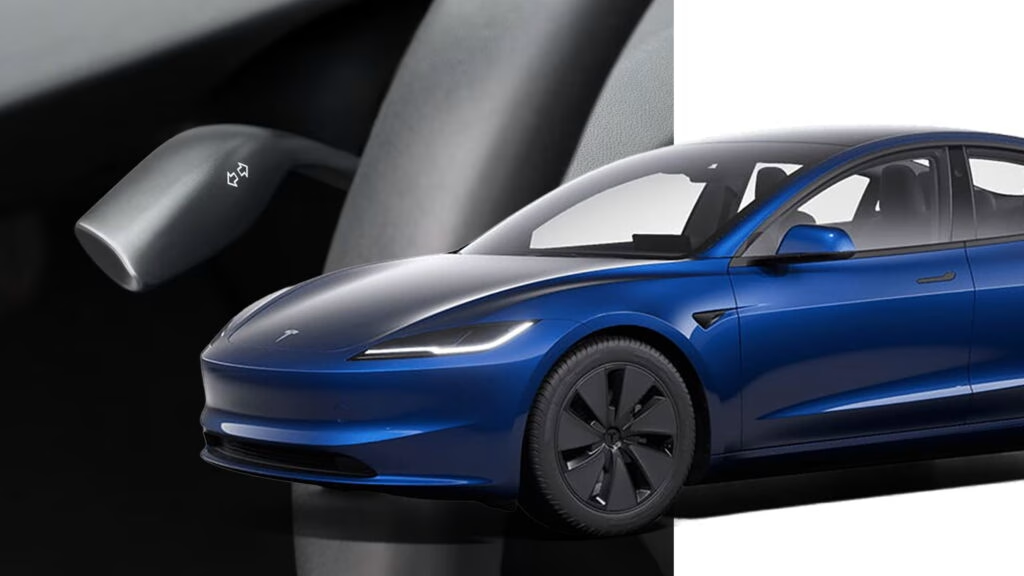Why Did Tesla Bring Back the Turn Signal Stalk on the Model 3 Highland in China?
When Tesla first launched the Model 3 Highland refresh in August 2023, it was clear the company was pushing boundaries—not just in range and interior upgrades, but in rethinking the basics. One of the most controversial changes? Ditching the traditional turn signal stalk for steering wheel buttons. This move, inspired by the Model S and Model X, split the Tesla community right down the middle. Some drivers adapted quickly, but many found the new setup less intuitive, especially in real-world driving where muscle memory matters.
Fast forward nearly two years, and Tesla has listened. The turn signal stalk is officially back on all Model 3 Highland trims in China. Why the reversal? Customer feedback, plain and simple. According to a 2024 survey by J.D. Power, over 60% of EV owners say that tactile controls—like stalks and knobs—make them feel safer and more in control, especially during quick maneuvers. Tesla’s decision to restore the stalk is a rare but telling example of a tech giant pivoting based on user experience, not just design philosophy.
How Can Existing Owners Upgrade to the New Turn Signal Stalk?
If you already own a Model 3 Highland in China and miss the good old stalk, you’re in luck. Tesla is rolling out a factory-backed retrofit called the Model 3 Steering Wheel Turn Signal Lever Modification. It’s available through Tesla’s online shop and app, priced at ¥2,499 (about $349). But don’t expect a DIY afternoon project—installation is only available at Tesla Service Centers, where trained technicians will swap out your steering wheel and fit the new stalk using specialized tools.
Here’s a neat detail: Tesla is recycling the old steering wheel and button components, which helps offset costs and reduces waste. The new stalk itself closely resembles the slimmer, more streamlined version found on the Model Y Juniper, rather than the chunkier pre-facelift Model 3 design. It’s a small but meaningful nod to both sustainability and user comfort.
Is This Upgrade Coming to Other Markets?
Right now, the turn signal stalk comeback is limited to China, but there’s every reason to believe it won’t stop there. The Model 3 is a global bestseller, and Tesla has confirmed plans to expand compatibility to all Highland units, not just those built after February 7, 2025. Industry analysts expect that Europe and North America will see similar offerings in the near future, especially as customer sentiment continues to shape product decisions.
It’s worth noting that Tesla hasn’t announced any plans to bring the stalk back to the Cybertruck, Model S, or Model X yet. For now, the focus is on high-volume vehicles where the feedback has been loudest and most consistent.
What About Aftermarket Solutions—Are They Still Worth Considering?
During the two-year stalk hiatus, third-party companies didn’t just sit on their hands. Enhance Auto, for example, launched the S3XY Stalks retrofit, which quickly gained traction among Model 3 owners who wanted a more familiar control setup. These aftermarket solutions filled a real gap, offering plug-and-play options for those unwilling to wait for an official fix.
However, with Tesla now offering a factory-backed solution, the calculus changes. Factory retrofits come with the peace of mind of warranty coverage, professional installation, and seamless integration with the car’s systems. That said, if you’re outside China or own an older Model 3 Highland, aftermarket kits may still be your best bet—at least for now.
Why Do Physical Controls Still Matter in Modern EVs?
Tesla’s experiment with steering wheel buttons was bold, but it highlighted a key truth: not every digital replacement is an upgrade. Physical controls like stalks offer tactile feedback, reduce driver distraction, and tap into decades of driving muscle memory. According to a 2023 study by the Insurance Institute for Highway Safety, drivers using traditional stalks made 30% fewer signaling errors compared to those using button-based systems.
It’s not just nostalgia. It’s about safety and usability. In a world where touchscreens are everywhere, sometimes the simplest solution—like a humble stalk—just works better.
What’s Next for Tesla’s Approach to Interior Controls?
Tesla’s willingness to reverse course on the turn signal stalk signals a more user-centric approach to design. As EVs become mainstream, automakers are realizing that innovation for its own sake isn’t always the answer. Listening to real-world feedback and making thoughtful adjustments can be just as powerful as launching the next big feature.
The big takeaway? Progress in EV design isn’t about perfection—it’s about smarter adjustments. Start with one change this week, and you’ll likely spot the difference by month’s end.

